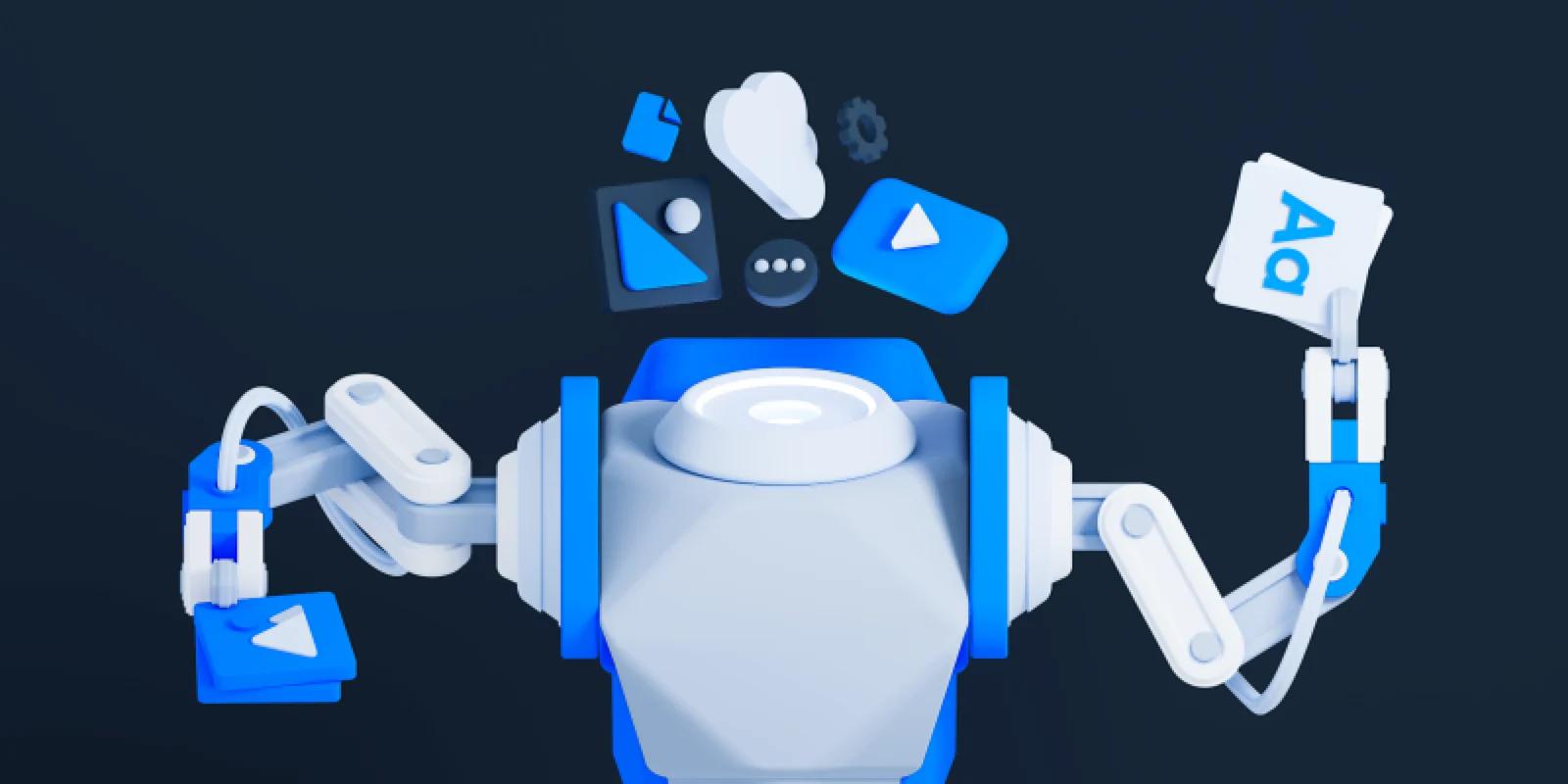What is a Headless CMS?
A headless CMS is a content management system that separates content creation from content delivery. Unlike traditional CMS platforms like WordPress, which bundle the front-end (website design) with the back-end (content storage), a headless CMS decouples these two layers. This means marketers and developers can work independently, using APIs to distribute content across multiple platforms—websites, mobile apps, digital kiosks, and more.
At its core, a headless CMS acts as a centralized content hub. Marketers can create and manage content in an intuitive interface, while developers use APIs to fetch and display that content anywhere, using the technology of their choice. This flexibility makes headless CMS an ideal solution for scalable, omnichannel marketing strategies, particularly in the B2B and SaaS spaces, where content needs to be agile, fast, and adaptable.
Why Is It Called "Headless"?
The term "headless" refers to the separation of the content (the "body") from the presentation layer (the "head"). Traditional CMS platforms come with a fixed front-end that dictates how content is displayed. In contrast, a headless CMS is purely content-focused, offering the flexibility to deliver content to any channel or device through API calls. This separation allows businesses to create, update, and optimize content independently of the front-end technology.
Now that we’ve clearly defined what a headless CMS is, this section will focus on explaining how headless architecture works in a way that makes sense to marketers without getting overly technical.
Headless CMS vs Traditional CMS
Choosing between a headless and traditional CMS is one of the most critical decisions for a marketing team. The right platform enables speed, flexibility, and seamless content delivery, while the wrong one can lead to bottlenecks, frustration, and missed opportunities.
Most businesses start with a traditional CMS like WordPress, where content management and website presentation are bundled into a single system. While this works for simple websites, it quickly becomes limiting as businesses scale and expand their digital presence.
A headless CMS, on the other hand, separates content from design. Instead of being locked into rigid templates, marketers and developers work independently, creating a more agile, scalable content strategy.
The Traditional CMS: Simple, but Limiting
Traditional CMS platforms were built for a time when websites were the primary digital touchpoint. They offer an all-in-one system where content creation, design, and publishing happen in the same environment. This works well for small businesses or simple websites but creates friction as marketing teams grow and need to support more channels.
If you’re on a traditional CMS, you may resonate with some of these common shortcomings:
- ❌ Template restrictions that limit brand differentiation
- ❌ Developer bottlenecks when making content or design changes
- ❌ Slower site performance due to bloated code and plugins
- ❌ Limited omnichannel capabilities
For marketing teams that want more speed, flexibility, and independence, these limitations become a roadblock.
The Headless CMS: Built for Growth
A headless CMS removes these limitations by decoupling content from the front-end experience. Instead of being locked into a single website framework, content is stored centrally and delivered via APIs to any platform—web, mobile, digital signage, or even voice assistants.
This unlocks major advantages for marketing teams:
- ✅ More creative freedom to design and optimize content without CMS restrictions
- ✅ Faster campaign execution without waiting on developers for every update
- ✅ Stronger performance and SEO with lightweight, modern front-end frameworks
- ✅ Future-proof technology that seamlessly fits into your larger tech stack
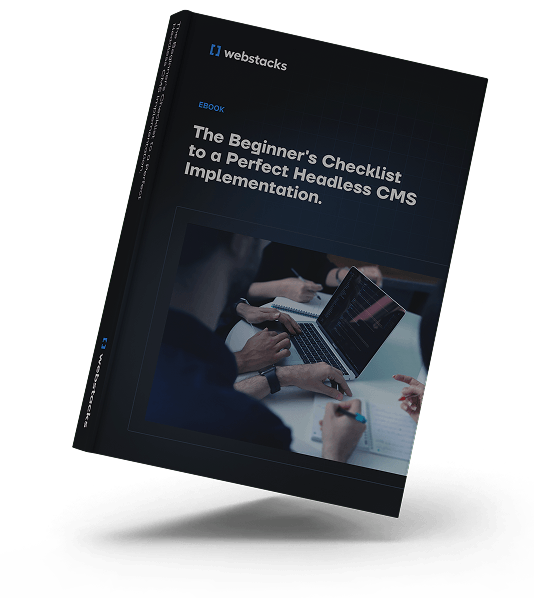
How Does Headless Architecture Work?
A headless CMS architecture is built on the idea of separating content management from content delivery, giving businesses complete control over how and where their content is displayed. Unlike traditional monolithic CMS platforms that bundle the back end (where content is stored) with the front end (how content is presented), headless architecture relies on APIs to deliver content dynamically to any digital experience.
For marketers, this means content can be created and managed in one place, while developers use the best tools and frameworks to build high-performance, scalable digital experiences.
Breaking Down the Headless CMS Architecture
A headless CMS consists of three main components:
- Content Repository (Back End) 📦
- APIs (Delivery Layer) 🔌
- Front-End Presentation (Where Content is Displayed) 🎨
This diagram below illustrates how Contentful, a leading headless CMS software, acts as a content infrastructure, but the same principles apply to any headless CMS. Instead of locking content into a single website or platform, a headless CMS stores content centrally and distributes it via APIs to multiple digital experiences.
How Does This Work in Action?
Let’s say your marketing team wants to launch a new product page. Here’s what happens in a headless CMS setup:
- Your team creates content in the headless CMS—copywriting, images, and components.
- The CMS stores that content independently, without locking it into a single-page template.
- APIs deliver the content to multiple front-end experiences—your website, mobile app, email campaigns, and even a chatbot.
- Content updates sync automatically across all platforms, ensuring consistency.
How Does a Headless CMS Benefit Marketers?
In a headless CMS, content is structured and stored in a flexible way, making it easy to manage and repurpose across various digital platforms. For B2B marketers, this means:
✅ Omnichannel content delivery – Deliver content seamlessly across websites, mobile apps, email campaigns, digital signage, and more.
✅ Independence from developers – Marketers can quickly create, update, and publish content without developer intervention.
✅ Faster time-to-market – Since the CMS doesn’t impose design constraints, content changes can be deployed rapidly.
Benefits of a Headless CMS
1. Composability: Future-Proofing and Easier Integrations
Marketing technology is constantly evolving, and businesses need a CMS that adapts to new trends and tools rather than becoming outdated in a few years. Traditional CMS platforms often lock teams into specific templates, plugins, and technologies, making it difficult to integrate new marketing tools, CRMS, or CDPs.
One of the most common headless CMS misconceptions is that it alienates the rest of your martech stack. However, that couldn't be further from the truth.
A headless CMS is built with composability in mind, meaning it can integrate seamlessly with best-in-class tools across the marketing stack—CRM systems, analytics platforms, automation tools, and more. This makes it easier to adopt new technologies without overhauling your entire website, ensuring that your content and marketing workflows remain agile and future-proof.
2. More Control for Marketers
One of the biggest pain points for marketing teams using traditional CMS platforms is dependency on developers for website updates, landing pages, and content changes. This slows down campaign execution, creates bottlenecks, and prevents teams from being as agile as they need to be.
With a headless CMS, marketers can manage content independently without waiting on engineering support. Many headless CMS platforms now offer visual editing interfaces, modular content blocks, and user-friendly workflows that empower marketing teams to create, edit, and publish content quickly.
3. Omnichannel Content Delivery
B2B and SaaS companies don’t just rely on a website to reach their audience. Prospects engage with brands through multiple touchpoints—websites, mobile apps, social media, email campaigns, and even digital kiosks at events. A traditional CMS, built primarily for websites, limits your ability to deliver content seamlessly across all these channels.
A headless CMS solves this by storing content centrally and distributing it via APIs to any platform. Marketers can create content once and publish it across multiple digital experiences without duplicating efforts. This ensures a consistent brand experience across channels while reducing the workload of managing content in multiple places.
4. Improved Site Performance
Website speed directly impacts user experience, conversion rates, and SEO rankings. Traditional CMS platforms often struggle with performance because they come with built-in themes, plugins, and unnecessary code that slow down load times.
Headless CMS architecture allows developers to build lightweight, high-performance front ends using modern frameworks like Next.js, Nuxt.js, or Svelte. This results in:
- Faster page load times
- Better Core Web Vitals (Google’s ranking factors)
- A smoother, more engaging experience for visitors
For marketing teams, this means higher engagement, lower bounce rates, and better search visibility, all of which contribute to more effective lead generation and conversions.
5. Better Scalability
As businesses grow, their digital presence expands—more web pages, more traffic, more integrations. A traditional CMS can struggle to scale efficiently, leading to slow load times, crashes during high-traffic events, and increasing maintenance challenges.
A headless CMS is designed to scale effortlessly by leveraging cloud-based infrastructure, global content delivery networks (CDNs), and optimized API performance. Whether you’re expanding internationally, launching new product lines, or handling a surge in website traffic, a headless CMS provides the flexibility and reliability to grow without technical limitations.
Does Your Website Need to Go Headless? Top 5 Reasons to Switch
Many marketing teams start with a traditional CMS like WordPress or Drupal. It’s the starting place for most startups. But the reality is that those platforms can only take you so far in the marketing website lifecycle.
At some point, you’re bound to reach their limits and begin to feel the consequences. The complications add, and what once worked is now holding your team back.
If you’re nodding your head at any of the following pain points, it’s probably time for your startup to go headless.
1. Your team is heavily reliant on developers
Marketing teams need to move fast, but traditional CMS platforms often require developer involvement for tasks as simple as updating a landing page, adjusting a CTA, or launching a new campaign. These dependencies slow down execution and create unnecessary bottlenecks.
Solution: A headless CMS removes these roadblocks by giving marketers a structured, intuitive content management interface.
2. Your website is painfully slow, and it’s killing your SEO.
A slow website directly impacts user engagement, lead generation, and search rankings. Traditional CMS platforms often struggle with speed due to outdated code, bloated plugins, and rigid architectures that can’t be optimized for performance.
Solution: With a headless CMS, content is delivered through APIs to modern, lightweight front-end frameworks. This leads to faster load times, improved Core Web Vitals, and a better overall user experience—critical factors for SEO and conversion rates.
3. Your CMS is preventing scalability
B2B marketers need to tailor content for different customer segments and regions, but traditional CMS platforms make this difficult. Managing multiple versions often requires duplicating pages, hard-coding variations, or using complex plug-ins that slow down the site.
Solution: Going headless streamlines personalization and localization by integrating with customer data platforms, translation services, and automation tools. Teams can deliver dynamic, personalized content, efficiently manage multilingual sites, and structure variations without extra manual work..
4. You’re stuck in rigid templates that limit creativity.
Many traditional CMS platforms force teams into predefined templates that restrict creativity and customization. Marketers often struggle to implement unique landing pages, dynamic content layouts, or personalized experiences without significant development work.
Solution: A headless CMS provides complete design flexibility. Content is stored separately from its presentation, allowing developers to build fully customized front-end experiences that align with branding and user experience goals.
5. You can’t repurpose content easily across different channels.
Your marketing content shouldn’t live in silos. But with a traditional CMS, every time you need to use content across different platforms you’re copying, pasting, and reformatting like it’s 2005.
Solution: A headless CMS centralizes your content and distributes it seamlessly across all channels. Write it once, use it everywhere without extra manual work, broken formatting, or wasted time.

Headless CMS Examples
There are a ton of headless CMS platforms out there, which makes picking a headless CMS a bit difficult. Moreover, the best solution for one business may not be right for another. What we can say is that there are a ton of great options out there. It’s best to identify your needs, conduct research, do a few demos, and discuss things with all the stakeholders involved in your CMS (marketers, developers, content editors, SEO, etc).
For now, here’s a place to get started in your buyer’s journey:
1. Sanity
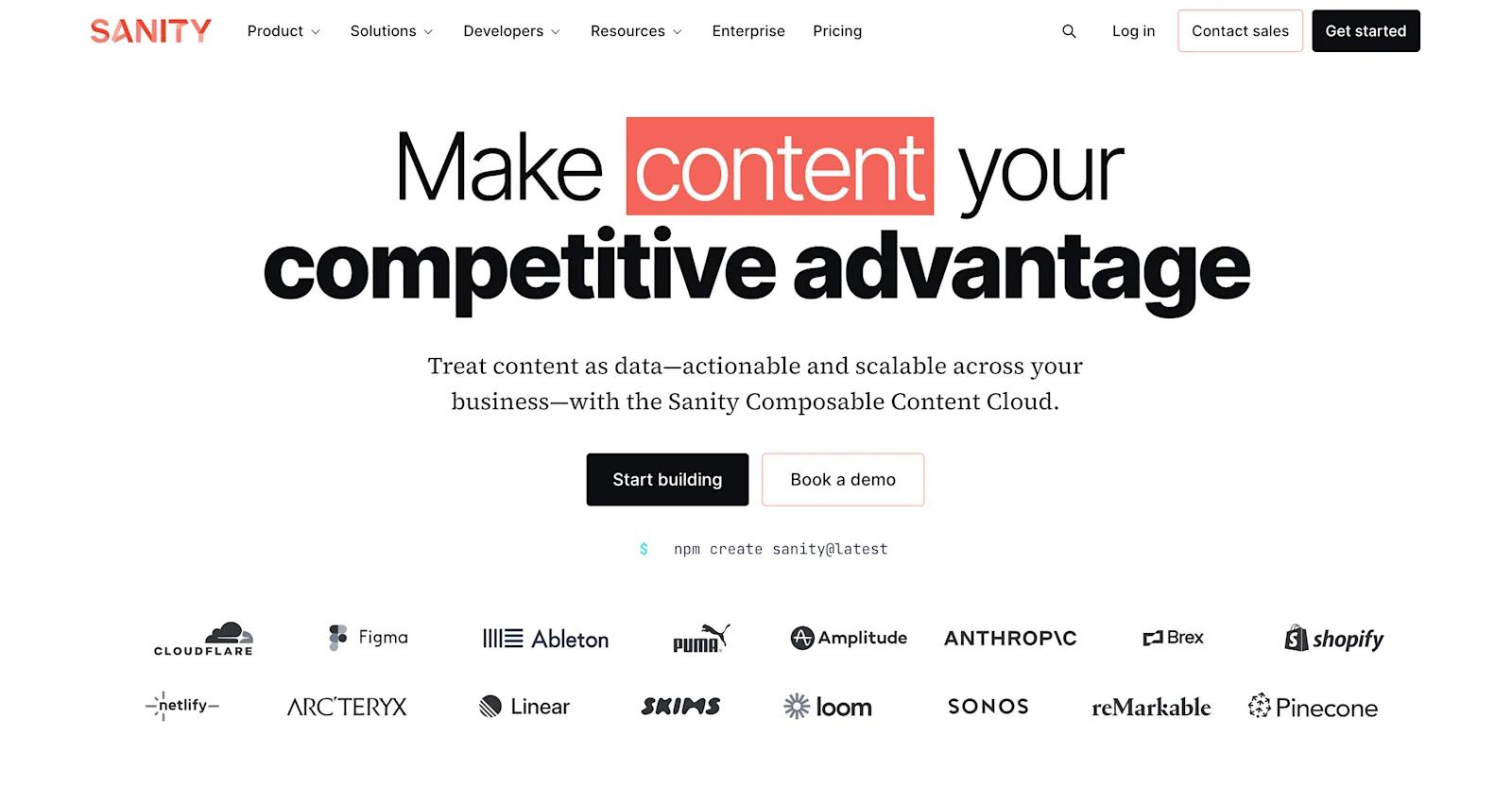
sanity website
Sanity is a highly flexible headless CMS known for its real-time collaboration and structured content approach. It provides a customizable content studio and a robust API that makes it easy to integrate with various front-end frameworks.
(Our team at Webstacks currently uses Sanity for our own website and really enjoys it!)
2. Contentful
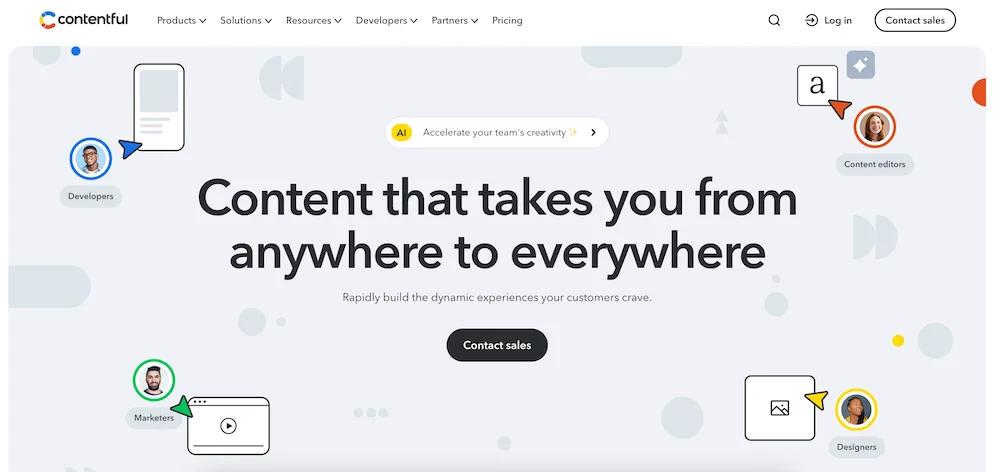
contentful
Contentful is one of the most widely used headless CMS platforms, offering a powerful API-first approach for managing structured content. It provides an intuitive UI for marketers and a scalable infrastructure for developers, making it ideal for enterprise teams.
3. DatoCMS
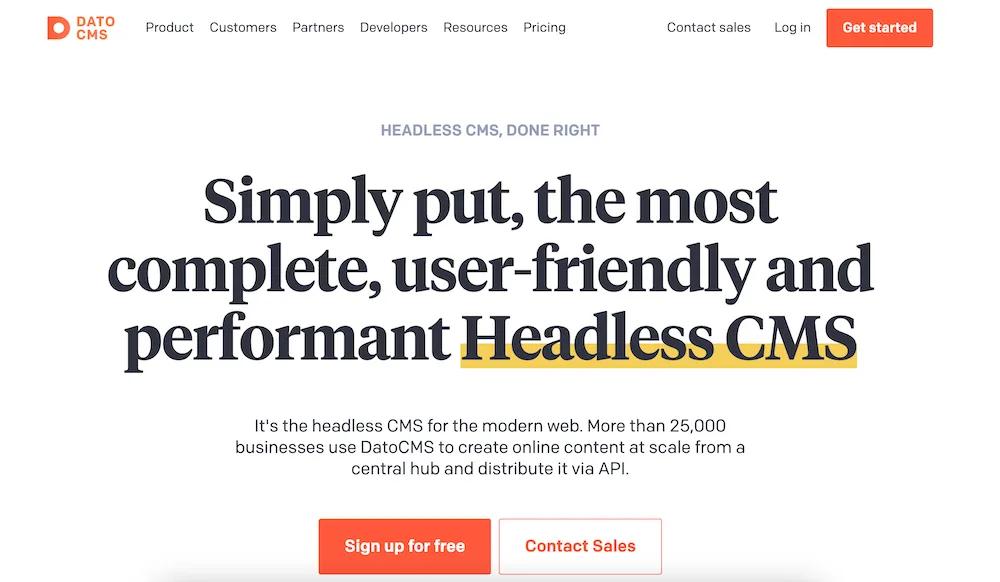
datocms
DatoCMS is a lightweight yet powerful headless CMS designed for performance-driven websites. It offers a visual content editor, strong localization support, and a GraphQL API for seamless content delivery. Its simplicity and developer-friendly architecture make it a great choice for teams that need a fast and efficient content workflow.
4. Storyblok
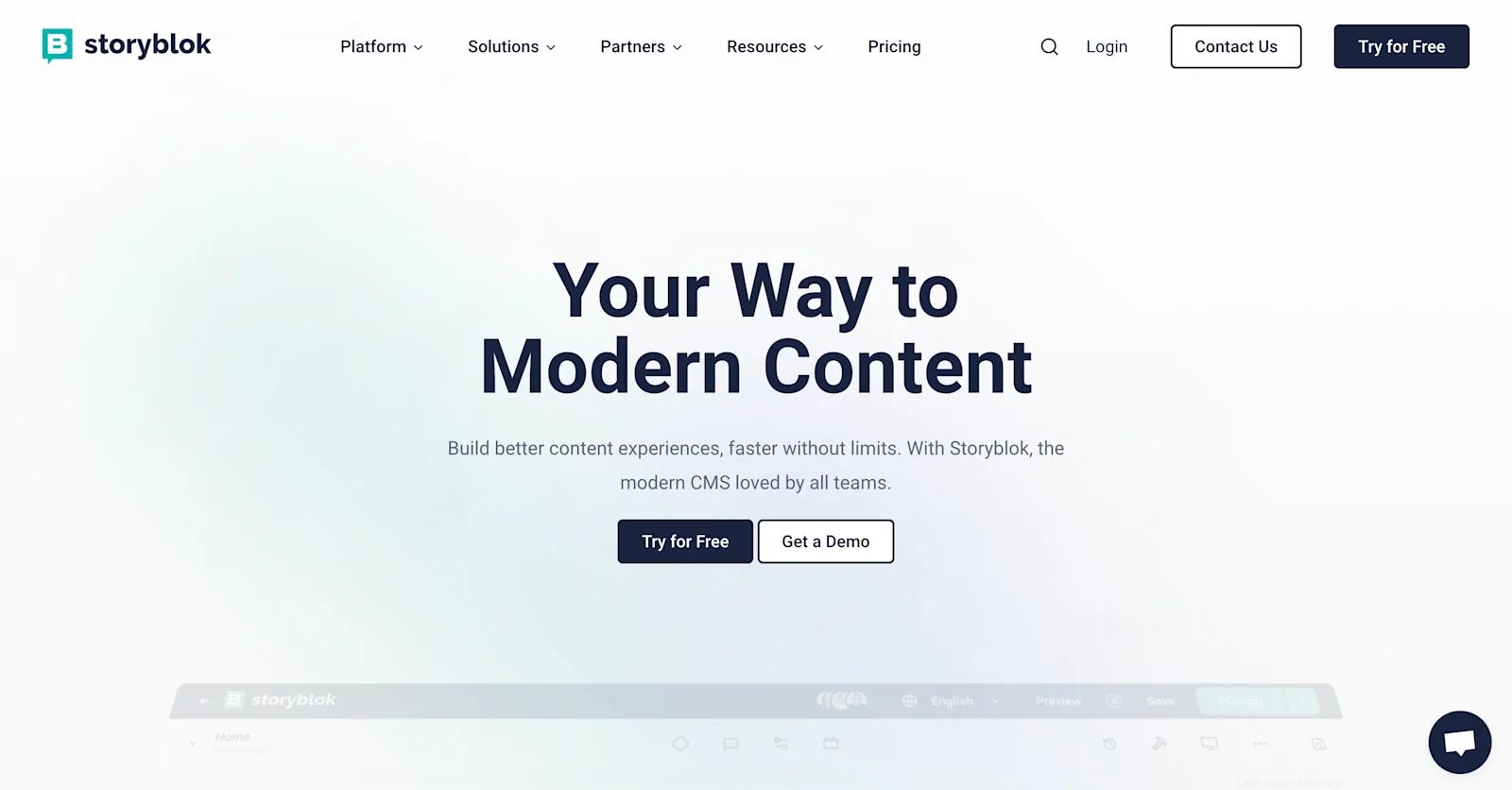
storyblok website
Storyblok is a unique headless CMS that combines an API-first approach with a visual editor, making it easier for marketers to create and manage content. Its component-based content structure allows for modular content reuse across different digital experiences. This makes it a strong option for teams that want the flexibility of a headless CMS without sacrificing a visual editing experience.
5. Builder.io
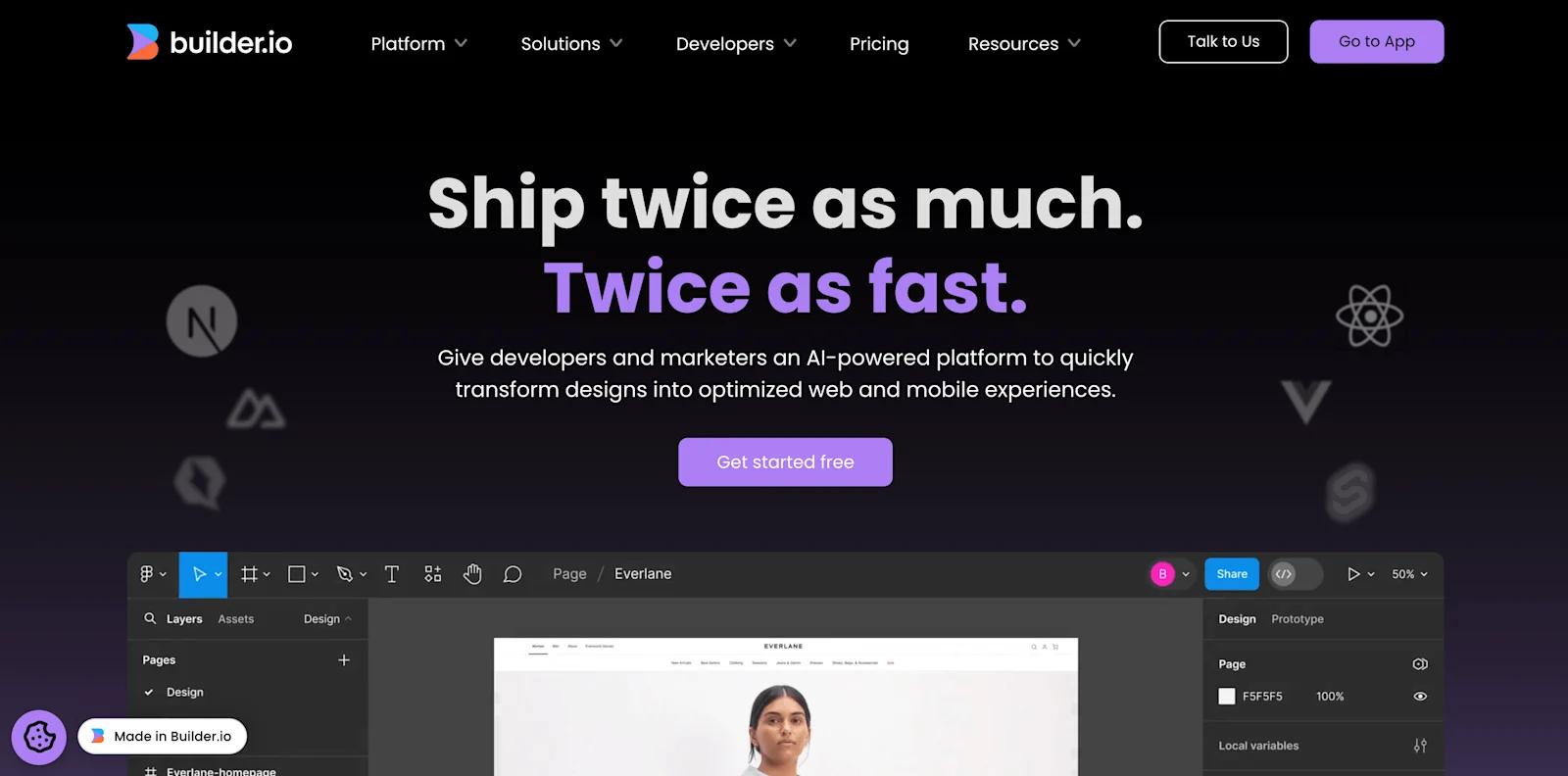
builder website
Builder.io is a headless CMS designed specifically for no-code and low-code content management. It offers a drag-and-drop editor that allows marketers to build and update content-rich pages without needing developer support. Its focus on performance and personalization makes it a great choice for marketing teams looking for more control over their content.
Webstacks Clients on a Headless CMS
Leading B2B SaaS companies have invested heavily in headless solutions to provide their customers and website visitors with an omnichannel experience.
We’ve helped several industry disruptors migrate and set up their supercharged headless CMS to develop an enterprise website capable of supporting high-growth strategies and powerful 3rd-party tools to augment their website operations. Check out the latest customer success stories.
ServiceTitan grows demos 18% with Contentful and Gatsby
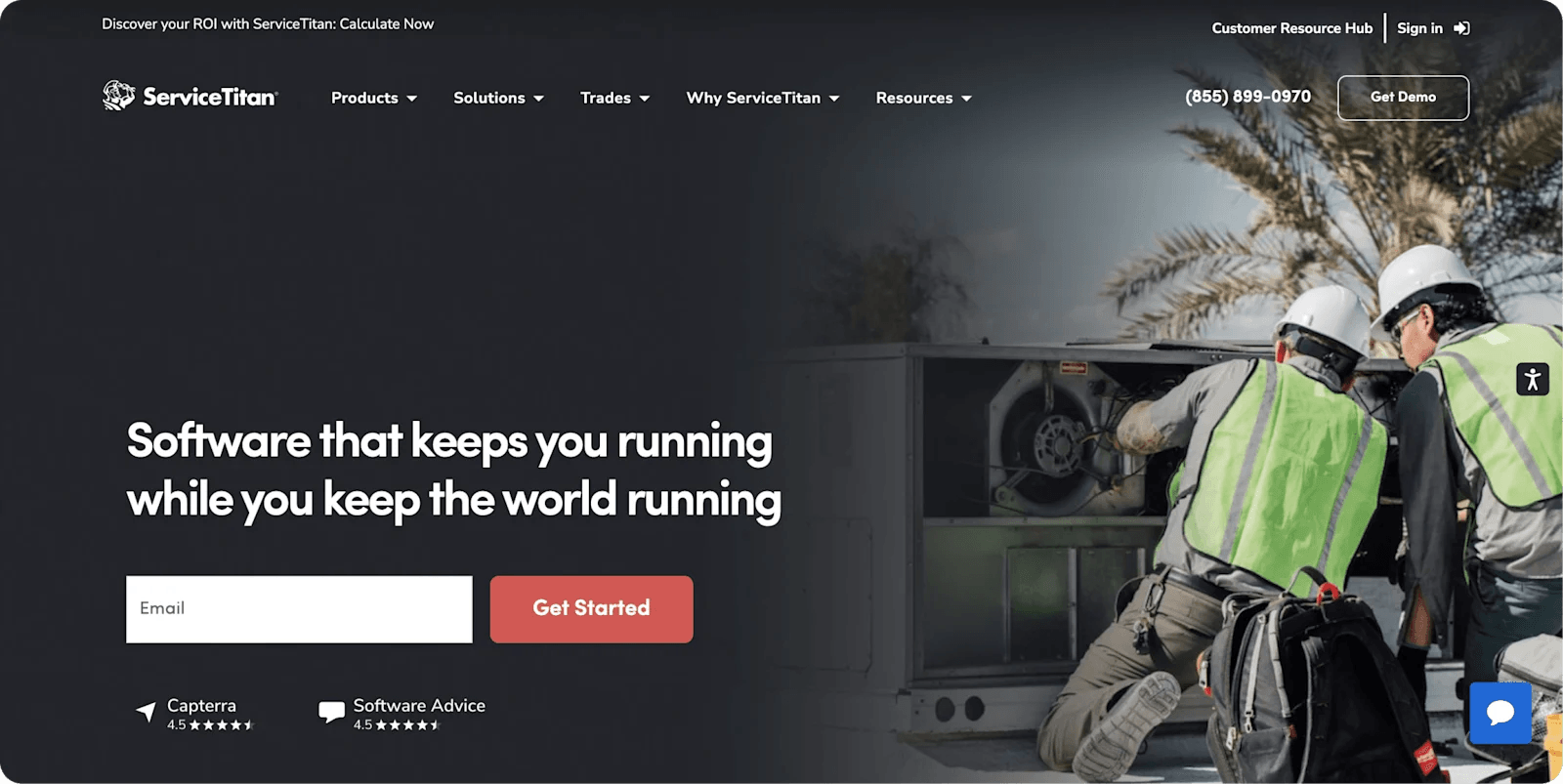
servicetitan homepage
ServiceTitan is the leading enterprise software platform for the multi-billion dollar home and commercial services industry.
ServiceTitan’s website goals were the following:
- Increase page speed with a modern frontend capable of scaling with increased demand
- Build a seamless integration between all their sales and marketing tools
One of the toughest decisions for large marketing organizations is choosing the right content management system to edit, publish, and manage website pages. ServiceTitan chose Contentful as their headless solution to give their content editors the autonomy to quickly launch website and marketing campaigns at scale.
Read ServiceTitan’s case study
Shopmonkey increases website speed by 43% migrating to Gatsby
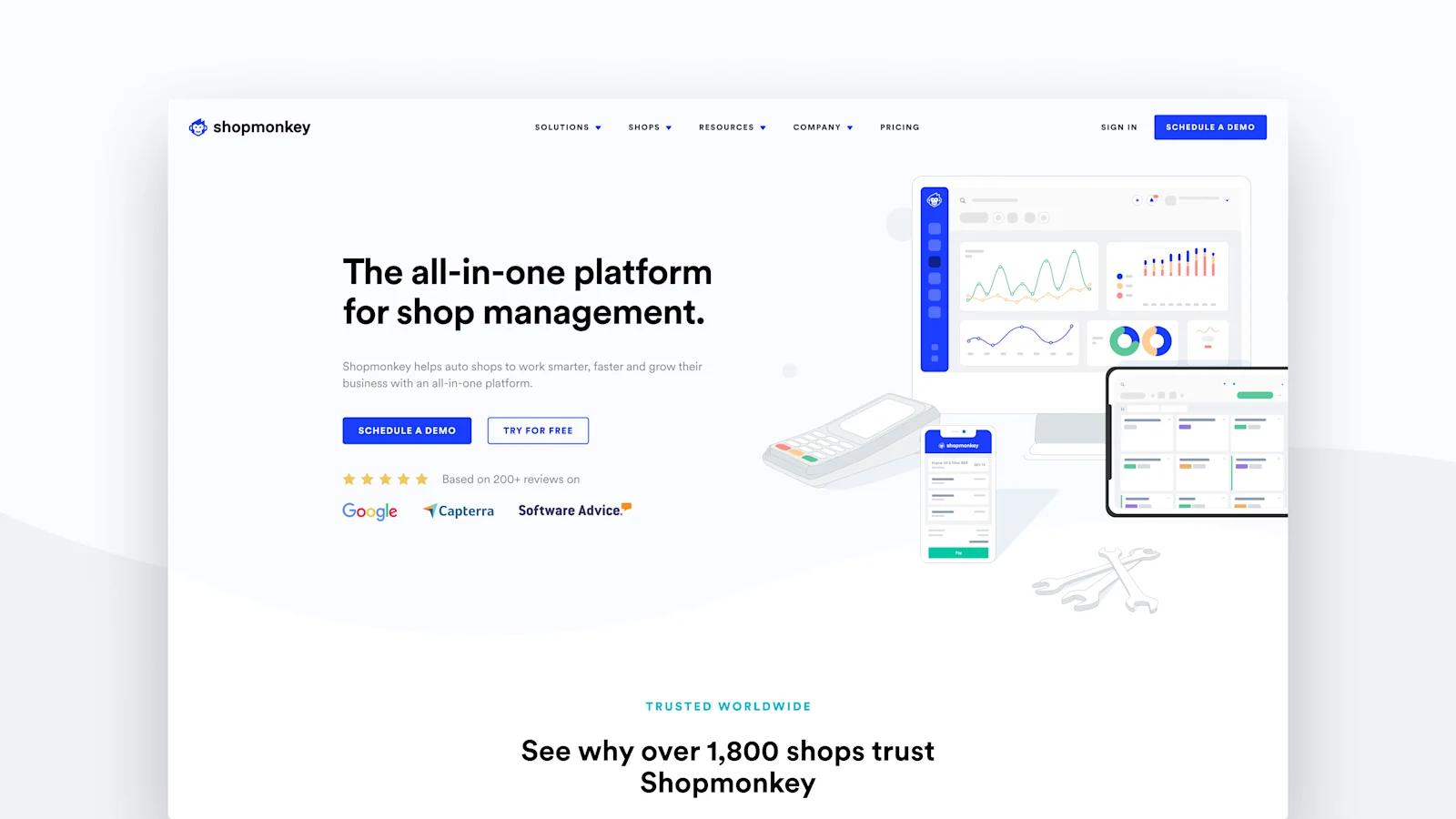
Shopmonkey Home
Whether you run a small detail shop, perform motorcycle repairs, or refurbish boats and bicycles, Shopmonkey's cloud-based tools give shop managers a single solution for all their needs.
Shopmonkey is an auto repair shop management software startup that empowers mechanics and shop owners to simplify their business operations with a full suite of cloud-based tools.
To remain ahead of their competitors, Shopmonkey needed a high-performance frontend solution and a robust content management system to empower their marketing team. The Shopmonkey team chose Gatsby as the frontend framework and DatoCMS as the headless backend.
Now, Shopmonkey's marketing team can create, publish, and update any type of content they want (e.g. landing pages, events, blogs, website pages, registration forms, etc.), without ever needing to bother their internal software engineers.
Semgrep Scales Content Marketing with Storyblok
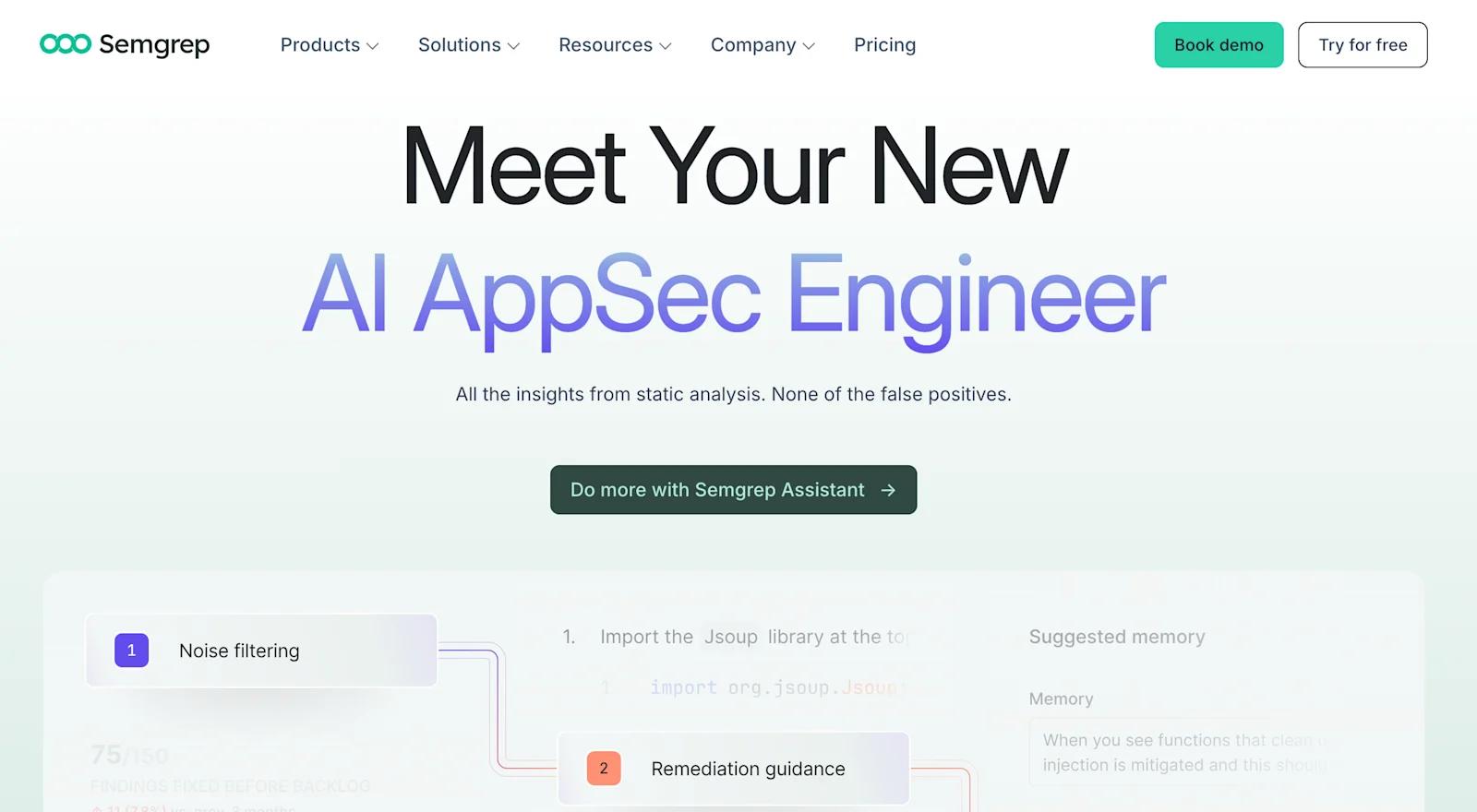
semgrep homepage
Semgrep is a cutting-edge static analysis tool designed to streamline code security and quality by identifying bugs, vulnerabilities, and enforcing code standards swiftly and effectively.
Storyblok was selected as the CMS of choice for Semgrep for several reasons:
- Storyblok helps engage modern audiences more efficiently and effectively by unleashing content operations at every stage of the content lifecycle.
- Storyblok’s Visual Editor speeds up content creation cycles and optimizes for both the developer and content editor experience.
- Composable Components gives teams greater control and flexibility across all projects.
- Achieving scalable content operations is a breeze with Storyblok’s central content hub, asset manager, and custom user roles and permissions.
Headless CMS Migration Best Practices
Switching to a headless CMS is a big move, but with the right approach, it can be a smooth transition. Here are some best practices to keep in mind:
- ✅ Define your goals upfront – Know why you’re making the switch. Whether it’s better performance, easier content management, or omnichannel delivery, having clear objectives will guide the migration.
- ✅ Audit and clean up existing content – A migration is the perfect time to remove outdated content, improve structure, and ensure everything is optimized for your new system.
- ✅ Choose the right headless CMS for your needs – Each platform has different strengths. Make sure the one you pick aligns with your content strategy, team workflows, and integration requirements.
- ✅ Plan your content modeling carefully – Unlike traditional CMS platforms, headless CMSs require structured content models. Take the time to map out how content will be organized to maximize flexibility and reusability.
- ✅ Use APIs to streamline integrations – Ensure your headless CMS connects smoothly with your website, CRM, marketing automation tools, and other essential platforms.
- ✅ Train your team early – A new CMS means new workflows. Get marketers, developers, and content creators up to speed with training sessions and clear documentation.
- ✅ Migrate in phases if possible – Instead of a full-site migration all at once, consider moving content and functionality in stages to minimize risk and disruption.
- ✅ Test everything before going live – Run extensive testing to catch broken links, formatting issues, or missing content before fully launching your new setup.
Taking a thoughtful, strategic approach will help your team transition smoothly and get the most out of your headless CMS from day one.
If you’re migrating from WordPress to a headless CMS, the shift can feel overwhelming at first—but the long-term benefits far outweigh the challenges. You’ll move from a rigid, plugin-heavy system to a flexible, API-driven architecture that improves performance, scalability, and content management. With the right migration strategy, you can preserve your existing content, maintain SEO rankings, and set your team up for a more efficient, future-proof workflow.
Learn More From B2B’s Premier Headless CMS Agency
Migrating to a headless CMS is a game-changer for B2B marketing teams looking for more flexibility, faster performance, and better scalability. But getting it right requires a solid strategy, the right technology choices, and a smooth execution plan.
At Webstacks, we specialize in helping high-growth B2B and SaaS companies build, migrate, and scale websites with headless CMS solutions. Our team of experts ensures your transition is seamless, so you can focus on creating high-impact content without the technical headaches.
Ready to take your website to the next level? Get in touch with us to see how we can help you make the switch to a headless CMS.


